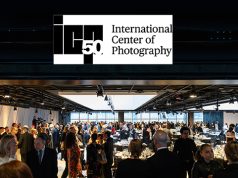
When word got out that Lou Reed had died of complications from a liver transplant he had back in August, the words “rock legend” began spilling out all over the radio and TV. For me, the news meant I had lost a friend and fellow photographer. Though many of his fans never knew it, Lou was an avid shooter with a visual aesthetic as quirky as his musical persona.
I first met Lou at the camera shop I worked at before joining B&H Photo. A self-admitted nitpicker when it came to things mechanical and/or technical, he could quickly wear you down asking one question after another. And I’d often have to repeat myself, because I would overload his circuits the first time I explained things. Being that I never seemed to suddenly get busy or simply disappear when he walked through the door, I soon gained his trust. (“Al, if you think I’m bad here, you should see them run when I walk into a guitar shop . . .”)
Lou appreciated good photographic gear, and over time I helped him transition from a Contax G3 system (he quickly grew fond of Carl Zeiss glass) to the earliest DSLRs from Canon and Fujifilm. The last camera system I sold him challenged him the most, but it brought him much shooting satisfaction—a medium-format Alpa with a Leaf capture back on the rear of the camera and interchangeable Schneider digital lenses attached to the front of the camera. Once he finally figured out how to use it, he was in heaven.
His picture book on the city he called home, Lou Reed’s New York, was in the germination stage when I first met him. To be honest, I really didn’t understand what he was trying to say in his pictures, or why he was so excited about them. It wasn’t unusual for him to show up first thing in the morning to show us the previous evening’s take, and we would take turns peering at the camera’s tiny LCD (large touch screens were a pipe dream at the time). Regardless. I enjoyed the banter and touches of half-cocked humor that inevitably found its way into our conversations. But it wasn’t until I watched him edit his images that I began to understand his way of seeing.
When asked by an interviewer what he finds attractive about taking pictures, he replied that he lived on intuition and taking pictures is intuitive. Lou had an interesting eye, but he seemingly saw things beyond the image in the viewfinder. Taking the picture was only the beginning of the process for him. Once loaded onto his computer’s hard drive, he would open each image and visually scour it at pixel resolution on a large monitor. It would be fair to say he would seek “pictures within the bigger picture.” As he found them he would crop them, save them, go back and look for more.
The trick of “getting” the photography of Lou Reed is to look at them as musical scores performed visually. Lou Reed’s New York is a perfect example. It’s broken up into chapters, or tracks if you will. Each has a title and no other text. The images are of broad urban landscapes, some at dawn and dusk, others at night. Some are literal, while others are blurred abstractions. Some are “loud,” and others slow and peaceful. All of the pictures are horizontal and bleed off the edges of the 9×11-inch pages. To break up the tempo, some of the images bleed 22 inches across both pages, and sometimes into three-page gatefolds that open up to 9×32.
Lou Reed’s New York is more than a picture book; it is a soundtrack of the city. Lou was a true artist who understood the dynamics of texture, pacing, tempo, hue and color. And just as he saw it and felt it in his music, these very same dynamics flowed through his imagery. Lou Reed was a very special person to those who were fortunate to have known him.
Rest in peace, Lou. And thanks for making this planet a more interesting place to visit.
_______________________________________
Allan Weitz is a senior consumer photo sales trainer, the publication editor and a website contributor at B&H Photo Video in New York. A graduate of the High School of Art & Design and the School of Visual Arts, both in NYC, Weitz is a well-published writer and photographer with a specialty in classic yachts.





